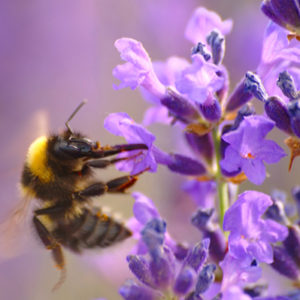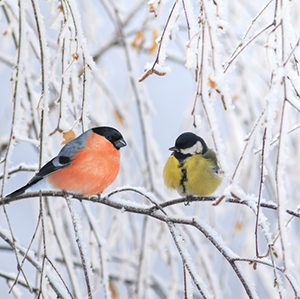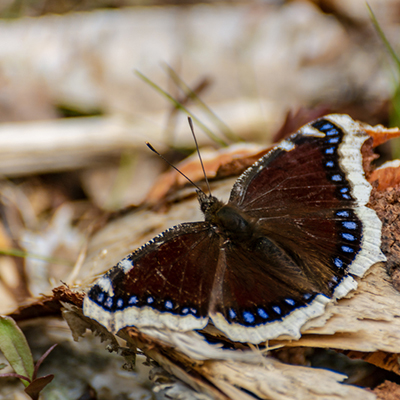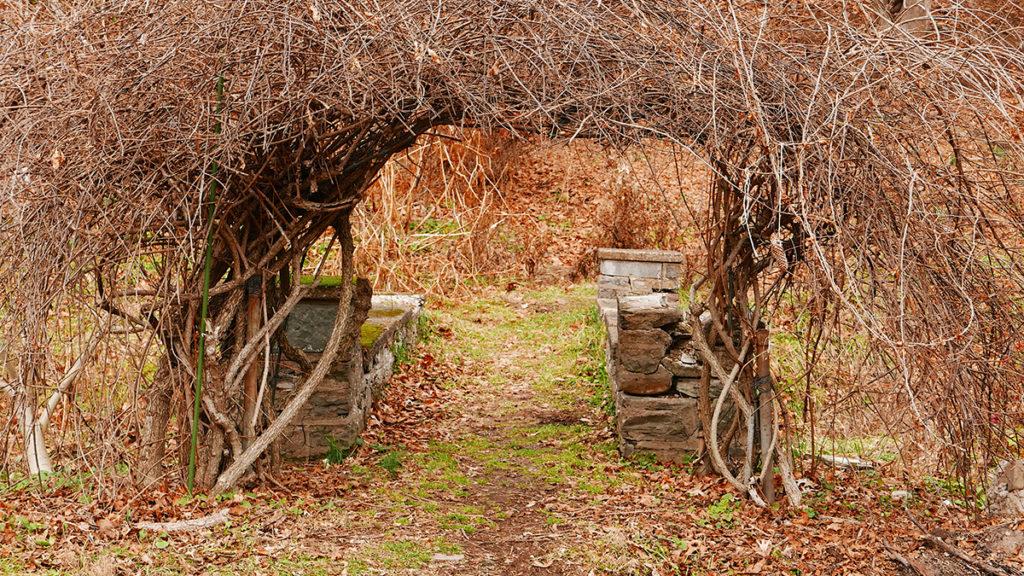Bless this mess! That’s how I’m looking at NOT putting my garden to bed for winter these days.
Certainly there's something satisfying about a cool fall day spent armed with pruners and rakes whipping the yard into shape. I have come to realize however that my cut-back, raked-up, clean-swept, trussed and twined garden is detrimental. For the birds, bees, bats, butterflies, beneficial insects and all manner of wildlife who make their home there. Having spent all spring and summer planting a garden that provides food and habitat for creatures and critters. My desire for a neat and tidy winter space is likely running them out of town. So, it’s time for a re-think of what it means to “put the garden to bed” for the winter.
Our yards can be welcome winter havens for the wildlife we depend on. Only if we provide them with what they need to survive there. I do remove and safely discard anything that's diseased along with the worst, most invasive weeds. And, top every bed and border with fresh compost. But spent foliage, downed branches, leaf piles, seed heads? I have plenty of all of these vital wildlife necessities–I just have to be okay with leaving well enough alone.
Each of us has to decide whether or not to cut back the garden at the close of the season. (A wild mess of a space is not for everyone). I thought I would share my reasons why I am holstering my clippers and hiding my rakes this fall. I would love to hear your thoughts on this topic.

4,000 species of native bees: That’s how many species call North America home. We count on them to pollinate the spring and summer garden. To do their best work these hardworking bees need a place to sit out winter. They must be protected from both cold and hungry predators.
70% of all of these species of bees nest underground, overwintering as eggs or larvae burrowed in the soil. Then emerging in spring. Others such bumble bees queens nest in leaf litter, hollowed-out plant stems, or even loose soil. By not cutting down every plant or turning every bit of soil. We can provide them with a cool place to chill out.
To Do: Set aside undisturbed patches of habitat allowing leaf litter and standing spent perennials. As well as dead twigs and stems and ground covers to remain. If you're working the soil in your beds or other spots, don't till soil where there might be ground nests. (Look for conical piles of dirt with a large hole in the middle that serves as the entrance).

Bird Song: Robins and waxwings and redpolls, oh my! At least 40 species of birds are likely to be found in our backyards during winter. They have the same needs—food, water, shelter—as they do any other time. Providing a reliable source of berries and seed heads that are prized by songbirds. (Such as finches, sparrows, chickadees, juncos, and jays). This has been shown to affect breeding success (and we always want more birds, right?). And, its a fact that the more insect-nurturing habitat you have, the greater the bird population will be. So, while I'm removing and discarding diseased top growth, I'm leaving most of the garden intact and standing.
To Do: Think about creating a songbird border next year (more here). For now, make a cozy nest of a brush pile with logs and larger branches on the bottom. Then layer smaller branches on top. Rake leaves up under trees and shrubs. And leave them there until spring clean up to encourage insects (that birds love to eat) to overwinter here. Also, that post-holiday Christmas tree tossed in the yard makes a safe and warm place for birds to stay.

Pretty Pollinators: The monarchs may have flown south. However, many of the butterflies we rely on to help pollinate our gardens can and do remain. They're settling in to endure the winter weather in a variety of life stages. And, they need our help to survive the season. Adults (like this Morning Cloak) that nestle into rock fissures and under tree bark. Caterpillars that bury deep in leaf litter or inside of rolled up leaves. Others that are tucked into a chrysalis in a sheltered place like overhangs and deep shrubbery. And some laid eggs laid in late fall that overwinter in the leaf litter of the host plant. All need a safe, undisturbed spot for the cold months. If I cut down and clean up the garden, I'm probably eliminating overwintering sites for many of these vital pollinators. (And perhaps even eliminating the insects themselves).
To Do: Leave leaf litter beneath trees undisturbed when possible. It’s likely to contain overwintering caterpillars or eggs. If you find what looks like a dead chrysalis in your garage, garden shed, or even hanging from the branch of a tree in the winter, leave it there! The butterfly inside may well emerge when spring comes.
Beyond being a good steward of my little corner of the Earth, I just enjoy watching my garden. And, my treasured trees, shrubs, and perennials segue from season to season without my getting all up in their business. There's something about a frost-kissed rose hip. Or a clutch of curled-edged leaves blown into a corner that calms me down and fills me up. Can you relate? Guessing you can.
That said, this was a process for me and might also be so for you. If you can’t imagine leaving the yard in its most natural state, start slow. Maybe choose just one garden bed each winter to clean out rather than all of them. Then designate one corner for a leaf pile. Watching winter birds foraging dried coneflowers for seeds or bees, beneficial insects, and butterflies emerging in spring. This might also make you love the beautiful "mess."
Please share how you approach the wrapping it up for the season by commenting below.
